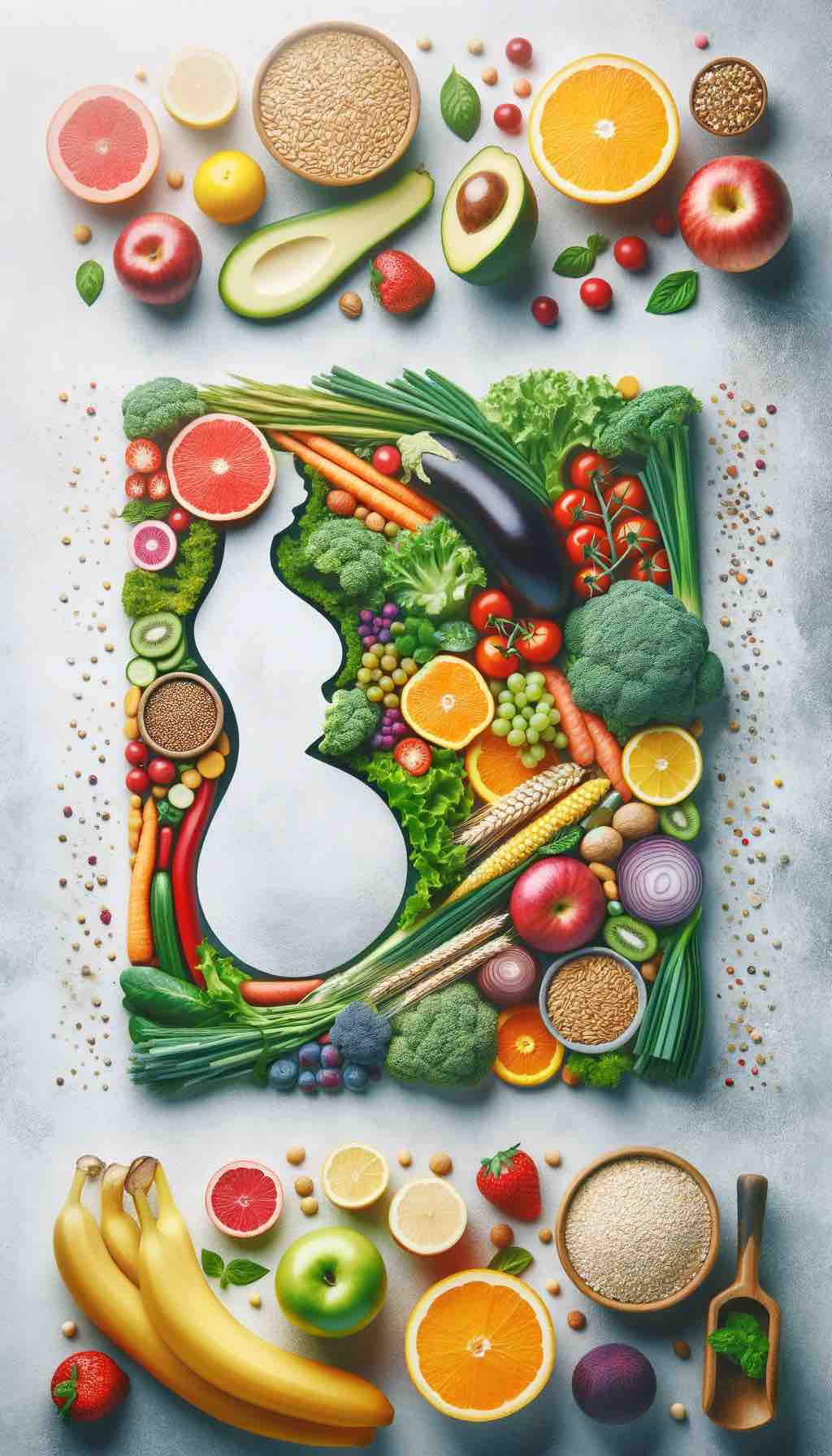
Hyperemesis Gravidarum: A Comprehensive Exploration
Pregnancy, often visualized as a time of glowing health and joyful anticipation, can sometimes be overshadowed by a less talked about, yet a significantly impactful condition known as Hyperemesis Gravidarum (HG). This severe form of morning sickness goes beyond the usual nausea and vomiting experienced by many during pregnancy. It is a debilitating condition that can profoundly affect the physical and emotional well-being of expecting mothers.
In this detailed exploration, we delve into the complexities of HG, unraveling its mysterious causes, and examining the diverse array of treatments available. Our journey through this topic is not just about understanding the medical nuances but also about shedding light on the emotional and psychological impacts of HG. This condition, often underestimated in its severity, calls for a deeper understanding and empathy, both from medical professionals and the support networks surrounding those affected.
As we navigate the intricate paths of HG, our goal is to provide you with comprehensive, medically-informed, and empathetic insights. Whether you are personally experiencing HG, supporting someone who is, or simply seeking to expand your knowledge, this exploration is designed to equip you with a holistic understanding of this challenging condition.
Join us as we embark on this informative journey, offering not just facts and figures, but also stories of resilience, medical expertise, and a message of hope and support for those navigating through the trials of Hyperemesis Gravidarum.
Stay tuned as we unfold the layers of Hyperemesis Gravidarum, from its definition and symptoms to the in-depth analysis of its causes, treatments, and beyond.
Section 1: Understanding Hyperemesis Gravidarum
Hyperemesis Gravidarum (HG) is often perceived as an extreme version of the common morning sickness associated with pregnancy, yet it stands out due to its severity and potential health risks. Unlike the occasional nausea felt by many pregnant women, HG presents with relentless, severe vomiting and nausea. This condition can lead to significant weight loss, dehydration, and electrolyte imbalances, necessitating a more profound medical intervention than the usual morning sickness remedies.
The Distinct Nature of HG Symptoms
The hallmark of HG is not just frequent vomiting but also the persistence and intensity of symptoms. Women with HG may experience:
- Continuous nausea that doesn’t subside, with or without vomiting.
- Vomiting that occurs multiple times a day, leading to severe dehydration.
- Weight loss, often exceeding 5% of pre-pregnancy body weight.
- Signs of malnutrition and vitamin deficiencies.
- Difficulty with daily activities due to persistent nausea.
Differentiating HG from Regular Morning Sickness
While morning sickness is common in pregnancy, affecting up to 80% of pregnant women, HG is relatively rare, impacting about 0.5% to 2% of pregnancies. The critical distinction lies in the impact of the symptoms. Morning sickness typically resolves by the end of the first trimester and is often manageable with lifestyle adjustments. In contrast, HG can last longer, sometimes throughout the entire pregnancy, and often requires medical treatment to manage the symptoms and ensure the health and safety of both the mother and the developing fetus.
Understanding the Severity Scale of HG
HG’s severity can vary significantly among those affected. For some, it may result in occasional hospital visits for rehydration, while for others, it could mean prolonged hospital stays with intensive care. The duration and severity of HG can also vary from one pregnancy to another, even in the same individual.
In our comprehensive journey through the world of HG, we aim to illuminate the nuances of this condition, not just as a medical challenge but as an experience that deeply impacts the lives of many women during one of the most crucial phases of their lives. As we venture further into understanding HG, we will unravel the potential causes, explore various treatment strategies, and offer insights into managing this complex condition.
Stay tuned for the next section where we delve into the causes of Hyperemesis Gravidarum, seeking to understand the why behind this challenging condition.
Section 2: Exploring the Causes of Hyperemesis Gravidarum
Hyperemesis Gravidarum (HG), a condition marked by severe and persistent nausea and vomiting during pregnancy, is more than a mere extension of morning sickness. Understanding its causes is complex, as they appear to be multifactorial, involving genetic, physiological, and possibly environmental factors.
Hormonal Influences in HG
A significant focus in understanding HG revolves around hormonal changes in pregnancy. These include:
- Human Chorionic Gonadotropin (hCG): Often considered a primary suspect, hCG levels rise rapidly during early pregnancy, coinciding with the onset of HG symptoms. Studies suggest a correlation between high hCG levels and the severity of HG, although this relationship is not fully understood.
- Estrogen: High levels of estrogen are also thought to play a role in HG. Estrogen can increase the severity of nausea and vomiting, although, like hCG, its exact mechanism in causing HG is not entirely clear.
- Thyroid Hormones: There is also evidence linking HG to elevated thyroid hormone levels, particularly in the first trimester. This link suggests a complex interplay between the endocrine system and HG.
Genetic and Biological Factors
Research indicates a genetic predisposition to HG, suggesting that it may run in families. Studies have identified certain genetic markers more common in women with HG than in those without. This genetic link offers a pathway for understanding the inherited aspects of HG and may open doors to more targeted treatments in the future.
Gastrointestinal and Physical Changes
The physical changes in pregnancy, such as altered gastrointestinal motility, can exacerbate symptoms of HG. The relaxation of the gastrointestinal muscles, a normal part of pregnancy, might contribute to increased nausea and vomiting.
Psychological and Environmental Factors
While psychological factors alone are unlikely to cause HG, stress and emotional well-being can impact its severity. Environmental factors, including diet, lifestyle, and possibly exposure to certain toxins or allergens, may also influence the onset or severity of HG, although evidence in this area remains less conclusive.
Understanding the causes of HG is crucial in developing effective treatment strategies and providing targeted care. By acknowledging the multifaceted nature of HG, healthcare providers can offer more personalized and effective treatment plans, enhancing the quality of care for those affected by this challenging condition.
In the next section, we will delve into the medical and alternative treatments available for Hyperemesis Gravidarum, offering insights into the various strategies to manage and alleviate this condition.
Section 3: Treatment Options for Hyperemesis Gravidarum
The management and treatment of Hyperemesis Gravidarum (HG) are as multifaceted as its causes. It’s imperative to tailor treatment to the individual’s needs, considering the severity of their symptoms and their overall health. The following outlines the primary approaches in treating HG, encompassing both medical interventions and home remedies.
Medical Interventions
- Intravenous (IV) Therapy and Hydration: Critical for combating dehydration, IV therapy replenishes lost fluids and electrolytes. It’s often the first line of treatment in severe cases of HG, especially if the patient is unable to retain oral fluids.
- Pharmacological Treatments: Various medications are used to manage HG symptoms:
- Antiemetics: These are medications that help reduce nausea and vomiting. Commonly prescribed antiemetics include Ondansetron (Zofran), Metoclopramide (Reglan), and Promethazine (Phenergan).
- Steroids: In some severe cases, corticosteroids like methylprednisolone are used, usually after other treatments have failed.
- Vitamin Supplements: Vitamin B6, often in combination with Doxylamine, can help alleviate nausea. In cases of severe vomiting, thiamine supplementation is crucial to prevent Wernicke’s encephalopathy.
- Hospitalization: For those with extreme HG, hospitalization might be necessary. This allows for close monitoring, IV therapy, and nutritional support.
Dietary Management and Lifestyle Changes
- Dietary Adjustments: Small, frequent meals are recommended rather than large meals. Bland, dry, and high-carbohydrate foods often are easier to tolerate. Avoiding triggers like spicy or fatty foods is also important.
- Hydration Strategies: Sipping on water, ginger ale, or electrolyte solutions can help maintain hydration. Some find relief with ice chips or popsicles.
Alternative and Complementary Therapies
- Herbal Remedies: Ginger, in the form of teas, candies, or supplements, can be effective for some women. Other herbs like peppermint may also offer relief.
- Acupuncture and Acupressure: These traditional Chinese medicine techniques can help alleviate nausea for some women.
- Aromatherapy: Scents like lemon, mint, or ginger essential oils can be soothing, though sensitivity to smells varies greatly among individuals with HG.
Mental Health and Emotional Well-being
Given the severe impact HG can have on mental health, psychological support is crucial. Counseling or therapy can help manage the stress, anxiety, and depression that often accompany HG.
Collaborative Care Approach
A multidisciplinary approach involving obstetricians, dietitians, mental health professionals, and in severe cases, specialists in maternal-fetal medicine, ensures comprehensive care.
The goal of these treatment modalities is not only to manage the physical symptoms of HG but also to address the emotional and psychological toll it takes on pregnant women. Each woman’s experience with HG is unique, requiring a personalized treatment plan developed in partnership with her healthcare team.
Stay tuned for our next section, where we will discuss the importance of recognizing when to seek medical help for Hyperemesis Gravidarum and the signs that indicate the need for immediate medical attention.
Section 4: Recognizing the Need for Medical Intervention in Hyperemesis Gravidarum
While managing HG at home is possible in milder cases, recognizing when medical intervention is necessary can be crucial to ensuring the safety and health of both the mother and the fetus. This section highlights the warning signs that indicate the need for immediate medical attention and the importance of ongoing monitoring.
Identifying Severe Symptoms of HG
Understanding the severity of symptoms that warrant a doctor’s visit is essential. These include:
- Persistent Vomiting: If vomiting is so frequent that it’s impossible to keep any food or fluids down for 24 hours, it’s time to seek medical help.
- Signs of Dehydration: Symptoms like dark urine, dizziness, rapid heartbeat, or fainting spells are red flags. Dehydration can lead to severe complications if not treated promptly.
- Weight Loss: Losing more than 5-10% of pre-pregnancy weight due to HG is a cause for concern and requires medical intervention.
- Electrolyte Imbalance: Symptoms like muscle cramps, weakness, or confusion might indicate an electrolyte imbalance, a dangerous complication of severe vomiting.
- Inability to Perform Daily Activities: If HG symptoms are so debilitating that they prevent normal functioning, it’s a sign that treatment needs to be reassessed.
The Role of Regular Medical Monitoring
Regular check-ups are vital for monitoring the health of both mother and baby. During these visits, healthcare providers can assess:
- The mother’s weight and hydration status.
- The baby’s growth and development through ultrasound and other diagnostic tools.
- The effectiveness of ongoing treatment strategies.
Navigating Emergency Situations
In some cases, HG can lead to emergencies requiring immediate medical attention. These situations include:
- Severe dehydration leading to kidney problems or shock.
- Suspected electrolyte imbalances risking heart and muscle function.
- Extreme malnutrition affecting both the mother’s and the baby’s health.
The Importance of a Supportive Healthcare Team
Having a healthcare team that understands HG and provides empathetic and informed care is crucial. This team should be responsive to changes in the patient’s condition and ready to adjust treatment plans as needed.
Educating Patients and Families
Educating patients and their families about HG, its potential risks, and when to seek help is an integral part of managing this condition. Empowering them with knowledge enables quicker responses to worsening symptoms.
Recognizing when HG symptoms are beyond home management and require medical intervention is crucial for the safety of both the mother and the baby. In our next section, we will explore long-term management strategies for HG and post-pregnancy considerations, providing insights into the journey beyond the immediate crisis of Hyperemesis Gravidarum.
Stay tuned for an in-depth look at managing Hyperemesis Gravidarum in the long term, ensuring continued health and well-being post-pregnancy.
Section 5: Long-Term Management and Post-Pregnancy Considerations for Hyperemesis Gravidarum
The journey through Hyperemesis Gravidarum (HG) doesn’t necessarily end with childbirth. For many women, the effects of HG can linger, impacting their physical health, emotional well-being, and future pregnancy decisions. This section explores the long-term management of HG and the crucial post-pregnancy considerations.
Long-Term Physical Health Management
- Nutritional Rehabilitation: Post-HG, it’s important to focus on nutritional recovery. This may involve working with a dietitian to address any deficiencies caused by prolonged vomiting and poor intake during pregnancy.
- Gastrointestinal Recovery: Some women may experience ongoing gastrointestinal issues like gastritis or esophagitis post-HG. Consultation with a gastroenterologist may be needed for treatment and management.
- Physical Rehabilitation: Regaining strength and physical health after prolonged bed rest or inactivity due to HG is vital. This may include physical therapy or a guided exercise program.
Addressing Emotional and Mental Health
- Counseling and Support Groups: Many women experience depression, anxiety, or PTSD following severe HG. Seeking mental health support, either through counseling or support groups, can aid in recovery.
- Acknowledging the Trauma: Recognizing the emotional toll of HG and allowing time for healing is crucial. It’s important for healthcare providers to address not just the physical, but also the emotional aftermath of HG.
Planning for Future Pregnancies
- Risk Assessment: Women with a history of HG have a higher risk of experiencing it in subsequent pregnancies. Discussing this risk with a healthcare provider can help in making informed decisions about future pregnancies.
- Pre-Pregnancy Counseling: Consulting with a healthcare provider before conceiving again can help in preparing for the possibility of HG recurrence. This may include pre-emptive nutritional strategies or early intervention plans.
- Emotional Preparedness: The decision to embark on another pregnancy after HG can be daunting. Mental health support and counseling can be beneficial in navigating these emotions.
Post-Pregnancy Physical Recovery
Recovery after HG can vary from woman to woman. Some may bounce back quickly, while others may take longer to regain their pre-pregnancy health. Regular follow-ups with healthcare providers are crucial during this period.
Support for Mothers and Families
Post-HG, support from family, friends, and healthcare providers remains essential. Understanding and compassion from loved ones can significantly aid in the recovery process.
Hyperemesis Gravidarum is a complex condition that can extend beyond the confines of pregnancy. Its long-term management requires a holistic approach, addressing both physical and emotional aspects. As we conclude our comprehensive exploration of HG, it’s our hope that this information has provided valuable insights and support for those affected by this challenging condition.
Stay connected for more informative and supportive content on women’s health and pregnancy.
Conclusion: Embracing Hope and Strength Beyond Hyperemesis Gravidarum
As we conclude our in-depth exploration of Hyperemesis Gravidarum (HG), it’s essential to recognize the resilience and strength embodied by those who endure this challenging condition. HG, more than a medical condition, is a journey that tests physical strength, mental fortitude, and emotional resilience.
A Journey of Resilience
Women who experience HG go through a profound journey. From the depths of debilitating nausea and vomiting to the challenging path of recovery, their stories are ones of incredible resilience. It’s a testament to the strength of women and the support systems that surround them.
The Power of Awareness and Understanding
Through this exploration, we aim to bring greater awareness to HG, shedding light on its complexities and the profound impact it can have on women and their families. Understanding leads to empathy, and empathy leads to better support and care.
Medical Advances and Hope for the Future
The medical community’s ongoing research into HG brings hope for more effective treatments and a deeper understanding of this condition. Every new study, every clinical trial, brings us closer to alleviating the burden of HG for future generations of mothers.
Embracing a Supportive Community
For those who have experienced or are currently experiencing HG, know that you are not alone. There is a community of support – from healthcare professionals to fellow HG survivors – ready to offer help, understanding, and encouragement.
A Message of Hope and Support
To all the women battling HG: Your strength is admirable, your resilience is inspiring. Remember, each day you endure, you move one step closer to a time beyond HG, to a moment of joy with your newborn child, and to a future filled with hope.
As we end our comprehensive guide on Hyperemesis Gravidarum, let’s carry forward the message of hope, support, and strength. May this guide serve as a beacon of understanding and compassion for all those touched by HG.
Thank you for joining us on this enlightening journey. Stay connected for more insightful content on women’s health, pregnancy, and beyond.
10 FAQs on Hyperemesis Gravidarum
- What is Hyperemesis Gravidarum (HG)?
HG is a severe form of morning sickness characterized by extreme, persistent nausea and vomiting during pregnancy, leading to dehydration, weight loss, and electrolyte imbalances.
- How is HG different from regular morning sickness?
Unlike typical morning sickness, HG causes more intense and frequent nausea and vomiting, often requiring medical intervention due to the risk of dehydration and weight loss.
- What causes HG?
The exact cause is unknown, but it is believed to be related to hormonal changes in pregnancy, particularly high levels of hCG and estrogen. Genetic factors may also play a role.
- Can HG harm the baby?
If untreated, HG can lead to complications like malnutrition and dehydration, which might affect the baby. However, with proper treatment, most women with HG have healthy pregnancies.
- What are the treatments for HG?
Treatments include IV fluids for hydration, anti-nausea medications, dietary changes, and, in severe cases, hospitalization. Alternative therapies like ginger and acupressure may also help.
- Can HG last the entire pregnancy?
While HG typically peaks around the 9th to 13th week of pregnancy, it can last longer in some cases, sometimes throughout the entire pregnancy.
- How can I manage HG at home?
Eating small, frequent meals, staying hydrated, avoiding triggers, and using home remedies like ginger can help. However, medical advice is crucial for proper management.
- Is there a risk of HG in future pregnancies?
Women who have had HG are more likely to experience it in subsequent pregnancies. Pre-pregnancy counseling can help in preparing for and managing this risk.
- Can HG affect mental health?
Yes, the severe and persistent symptoms of HG can lead to stress, anxiety, and depression. Seeking mental health support is important for overall well-being.
- When should I seek medical help for HG?
If you’re unable to keep food or liquids down, experience signs of dehydration, lose significant weight, or if your symptoms severely impact your daily life, seek medical attention immediately.
Blog Tags
pregnancy, hyperemesis gravidarum, maternal health, morning sickness, HG treatment, pregnancy wellness, prenatal care, HG causes, pregnancy nutrition, maternal mental health














